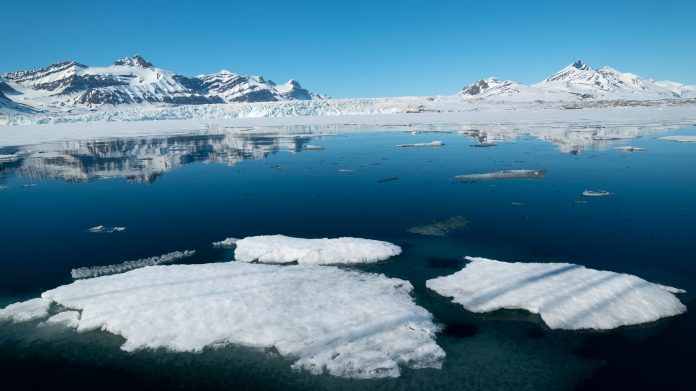New research led by an international team of scientists explains why Arctic Sea ice loss has slowed since 2007. Their findings indicated this was linked to a weather pattern called the Arctic dipole reversal
This Phenomenon, Known as ‘Atlantification,’ Reveals How North Atlantic Waters Impact the Arctic Ocean’s Climate.
Responses to the Arctic Dipole were described in an online paper called Journal Science. This study provides insights into the role of North Atlantic water in shaping the Arctic Ocean’s climate, a phenomenon termed ‘Atlantification.’
Professor Igor Polyakov of the University of Alaska Fairbanks College of Natural Science and Mathematics led the research.
“This is a multidisciplinary view on what’s going on in the Arctic and beyond,”
Polyakov said of the new research. “Our analysis covered the atmosphere, ocean, ice, changing continents and changing biology in response to climate change.”
Counterclockwise winds and freshwater flow
Extensive data, including direct instrumental observations, reanalysis data, and satellite records spanning multiple decades, indicates that the Arctic dipole follows a roughly 15-year cycle. The current phase of this system is likely approaching its conclusion.
In the current “positive” regime, high-pressure systems dominate the Canadian Arctic region, resulting in clockwise winds. Low pressure is centred over the Siberian Arctic and features counterclockwise winds.
This wind pattern influences upper ocean currents and has year-round impacts on regional air temperatures, atmosphere-ice-ocean heat exchanges, sea-ice drift and exports, and ecological consequences.
The authors write, “Water exchanges between the Nordic seas and the Arctic Ocean are critically important for the state of the Arctic climate system”, and that sea ice decline is “a true indicator of climate change.”
From analysing the oceanic response to the wind pattern since 2007, scientists have observed reduced Atlantic Ocean inflow into the Arctic Ocean via the Fram Strait (east of Greenland) and increased Atlantic flow into the Barents Sea (located north of Norway and western Russia).
This shifting dynamic between the Fram Strait and the Barents Sea, driven by the alternating Arctic dipole regimes, is referred to as a “switchgear mechanism” in the new research.
Freshwater layer’s role in slowing sea ice loss
Additionally, under the current positive Arctic dipole regime, counterclockwise winds from the low-pressure region are pushing fresh water from Siberian rivers into the Canadian sector of the Arctic Ocean.
The researchers also discovered that counterclockwise winds within the current positive Arctic dipole regime are responsible for transporting fresh water from Siberian rivers into the Canadian sector of the Arctic Ocean.
This westward movement of freshwater between 2007 and 2021 contributed to a deceleration in the overall loss of Arctic sea ice when compared to the period from 1992 to 2006. When the fresh water layer’s thickness increased, a stable barrier prevented it from mixing with the salt water below. This substantial freshwater layer acted as insulation, thwarting the warmer saltwater from melting sea ice from beneath.
The “Switchgear Mechanism” revealed
The authors note that this “switchgear mechanism” governing sub-Arctic water inflows has significant implications for marine ecosystems. It can create more favourable conditions for sub-Arctic boreal species in the eastern portion of the Eurasian Basin compared to the western part, impacting marine life profoundly.











